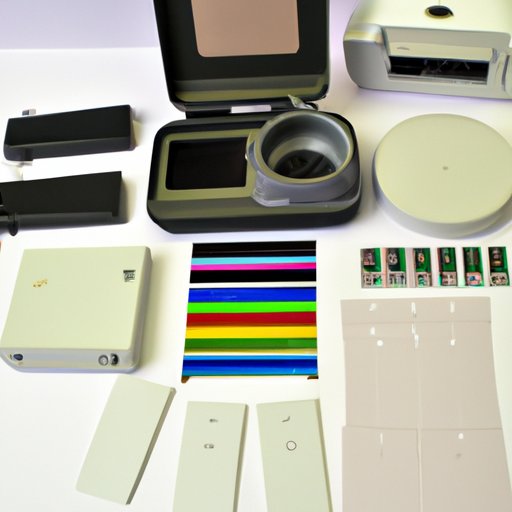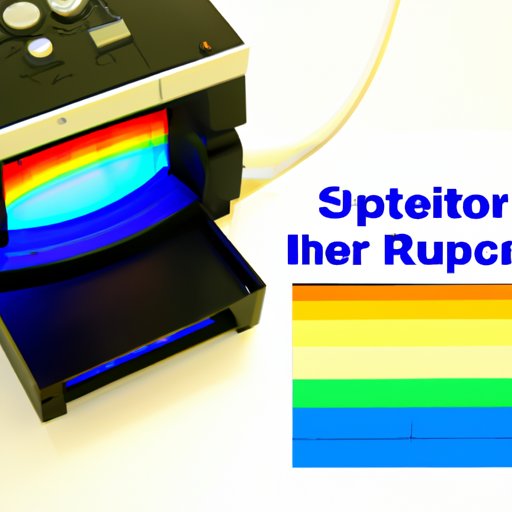Introduction
A spectrophotometer is an instrument used to measure the amount of light absorbed by a sample. It measures the intensity of light across a range of wavelengths, and can be used to measure the concentration of a solution or determine the chemical composition of a substance. This article will provide an overview of how a spectrophotometer works, the various parts and their functions, the different types available, and how the measurements are used in a variety of industries.
Step-by-Step Guide to Understanding Spectrophotometer Operation
The first step in using a spectrophotometer is setting up the machine. This involves connecting the power supply and other components, such as the detector and sample compartment. Once the machine is set up, it is time to prepare the samples. This involves diluting the sample if necessary, and placing it into the sample compartment. The next step is to run the analysis. This involves setting the wavelength of the light source, and then measuring the amount of light that is absorbed by the sample. Once the analysis is complete, the results are displayed on the screen.

An Overview of Spectrophotometer Parts and Their Functions
Spectrophotometers consist of several parts, each of which has a specific function. The detector is responsible for measuring the amount of light absorbed by the sample. The monochromator is a device that splits the light into its component wavelengths, allowing the user to select the desired wavelength. The light source is what produces the light that is used in the measurement, and can be either a bulb or laser. Finally, the sample compartment is where the sample is placed for analysis.
Exploring the Different Types of Spectrophotometers
There are several different types of spectrophotometers. UV/Vis spectrophotometers measure the amount of ultraviolet (UV) and visible (Vis) light absorbed by the sample. Infrared spectrophotometers measure the amount of infrared radiation absorbed by the sample. Finally, Raman spectrophotometers measure the Raman scattering of light from the sample.

How Spectrophotometer Measurements are Used in a Variety of Industries
Spectrophotometer measurements are used in a variety of industries, including chemistry, biochemistry, and environmental science. In chemistry, they are used to measure the concentration of a solution, identify compounds, and study reaction kinetics. In biochemistry, they are used to measure protein concentrations and study enzyme kinetics. In environmental science, they are used to measure pollutants and trace metals in water samples.
Troubleshooting Common Spectrophotometer Problems
When using a spectrophotometer, there are a few common problems that can arise. To prevent these problems, it is important to follow a checklist before running an experiment. This checklist should include checking the power supply, ensuring that the sample is correctly prepared, and ensuring that the detector and monochromator are working properly. Additionally, it is important to ensure that the sample is clean and free of any contaminants, as this can affect the accuracy of the measurements.
Conclusion
This article provided an overview of how spectrophotometers work, the various parts and their functions, the different types available, and how the measurements are used in a variety of industries. Additionally, it discussed troubleshooting common spectrophotometer problems and offered tips for avoiding them. By understanding how spectrophotometers operate, researchers can better utilize the technology to gain valuable insights about the substances they are studying.
(Note: Is this article not meeting your expectations? Do you have knowledge or insights to share? Unlock new opportunities and expand your reach by joining our authors team. Click Registration to join us and share your expertise with our readers.)
